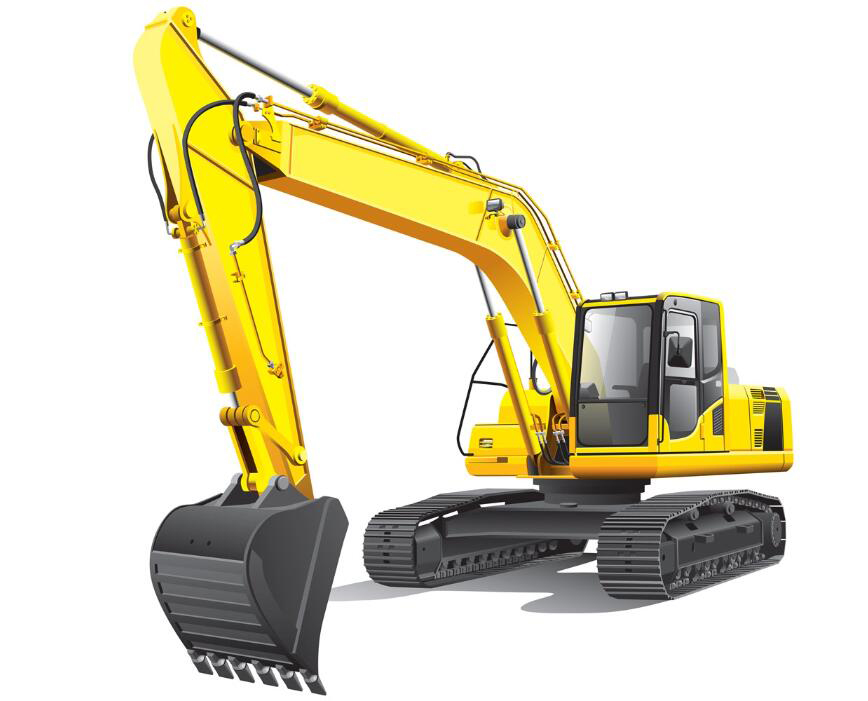Common faults of excavator

Reasons for "skipping"
(1)The mechanical shift transmission mechanism is adopted for the wear of W4-60 excavator transmission mechanism. The transmission mechanism shifts gears by sliding the gear sleeve to move axially on the fixed gear sleeve and mesh with the driven gear of each gear. In the process of frequent gear shifting, the tooth end face of the meshing gear is easy to be grinded into a conical surface, resulting in the reduction of its meshing performance and the phenomenon of "tooth jumping".
(2)In order to prevent the transmission from "jumping", the self-locking steel ball and spring are installed in the box cover hole above the shift fork shaft for gears II, III, IV and V of the transmission, and in the shift fork shaft for gears I and reverse. When the elasticity of the spring that plays the role of positioning self-locking weakens or breaks, the self-locking performance of the self-locking mechanism will decline until it disappears, causing the transmission to "jump". At the same time, if the locating steel ball or the groove on the shift fork shaft is worn, it will also cause the transmission to "jump".
(3)Improper adjustment of shift device The gearbox of this type of excavator adopts mechanical manual shift. If the gear lever, vertical shaft, horizontal shaft and vertical fixing screws are loose, the transmission can also "skip".
(4)Sudden change of external load Due to the working nature of the excavator and the design of the machine itself, the sudden change of external load will also cause its transmission to "jump". When the road surface is uneven, the machine is driving downhill or the driving route is improper, and the external load changes suddenly, the sudden change of the load will act on the gear mesh gear of the transmission through the wheel and transmission shaft, which will cause the gear mesh gear to disengage due to axial thrust, causing the transmission to "jump".
Preventive measure
(1)Operate in strict accordance with the operating instructions and driving essentials, and try to avoid "tooth jamming" when shifting to reduce the wear of the gear pair.
(2)Strictly implement the maintenance system and strengthen the maintenance of gear shifting device. When the linkage of the gear shifting device is not properly connected, it should be adjusted in time to ensure the good performance of the gear shifting device.
(3)Pay attention to the maintenance of the self-locking mechanism, repair or replace the positioning steel ball, spring and shift fork shaft that reduce or lose the positioning effect in time to keep the self-locking performance of the self-locking mechanism in good condition.
(4)When assembling the transmission, operate in strict accordance with the operating instructions to ensure that all components of the transmission are correctly adjusted and tightened. On the steep downhill road, the driver shall operate in strict accordance with the action essentials of downhill and shall not violate the rules.
Emergency response methods
If the transmission "jumps" while the excavator is running, stop the machine (or continue driving) in time, and then find out the cause and eliminate the fault. The specific method is:
(1)If there is a "bump" when driving on a flat road, you can stop according to the normal parking principle, carefully find the cause and eliminate the fault.
(2)If "skip gear" occurs when driving uphill, set the gear to low gear or first gear, and stop the machine when the machine reaches the top of the slope to eliminate the fault; If downshift fails or "skip" occurs again, stop the machine according to the action essentials and requirements of ramp parking, and then eliminate the fault.
(3)If "skip gear" occurs when driving downhill, shift the gear to the high speed position or take "emergency gear" (emergency downshift) measures according to the action essentials of upshift. After the machine reaches the bottom of the slope, stop the machine to check and eliminate the fault; If "upshift" and "upshift" fail or "skip" occurs again (neutral at this time), the driver can control the engine speed at medium speed (to prevent the engine from stalling), use the method of "braking" to slide the machine to the bottom of the slope, and then eliminate the fault. If "upshift" and "upshift" fail or "skip" occurs again (at this time, it is neutral), and the machine is on the downhill slope (at this time, the machine will "dive" to the bottom of the slope at a very fast speed), then stop quickly according to the action essentials and requirements of downhill parking, and then deduct the fault.
1:Swing operation pilot_ Whether the secondary pressure is within the normal range (the normal pilot pressure is above 35KG);
2:The rotary overflow valve is damaged, and whether the rotary overflow pressure is within the normal range (overflow pressure: 280KG);
3:Whether the main rotary valve core is switched in place and whether the return spring of the rotary valve core is broken;
4:The valve distributor is worn and damaged, causing internal leakage of the swing motor;
5:The pump body and plunger of the swing motor are worn and damaged, causing internal leakage of the motor;
6:Only if the slewing action is slow and other actions are normal, the faults of the main hydraulic pump and the main overflow valve can be eliminated.





















